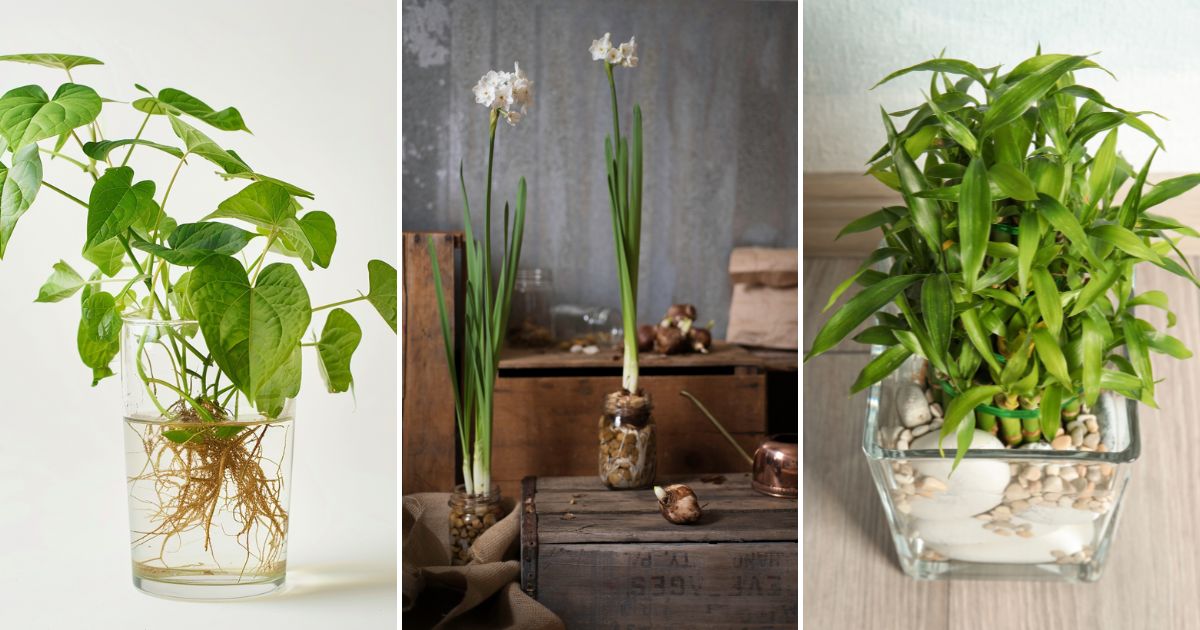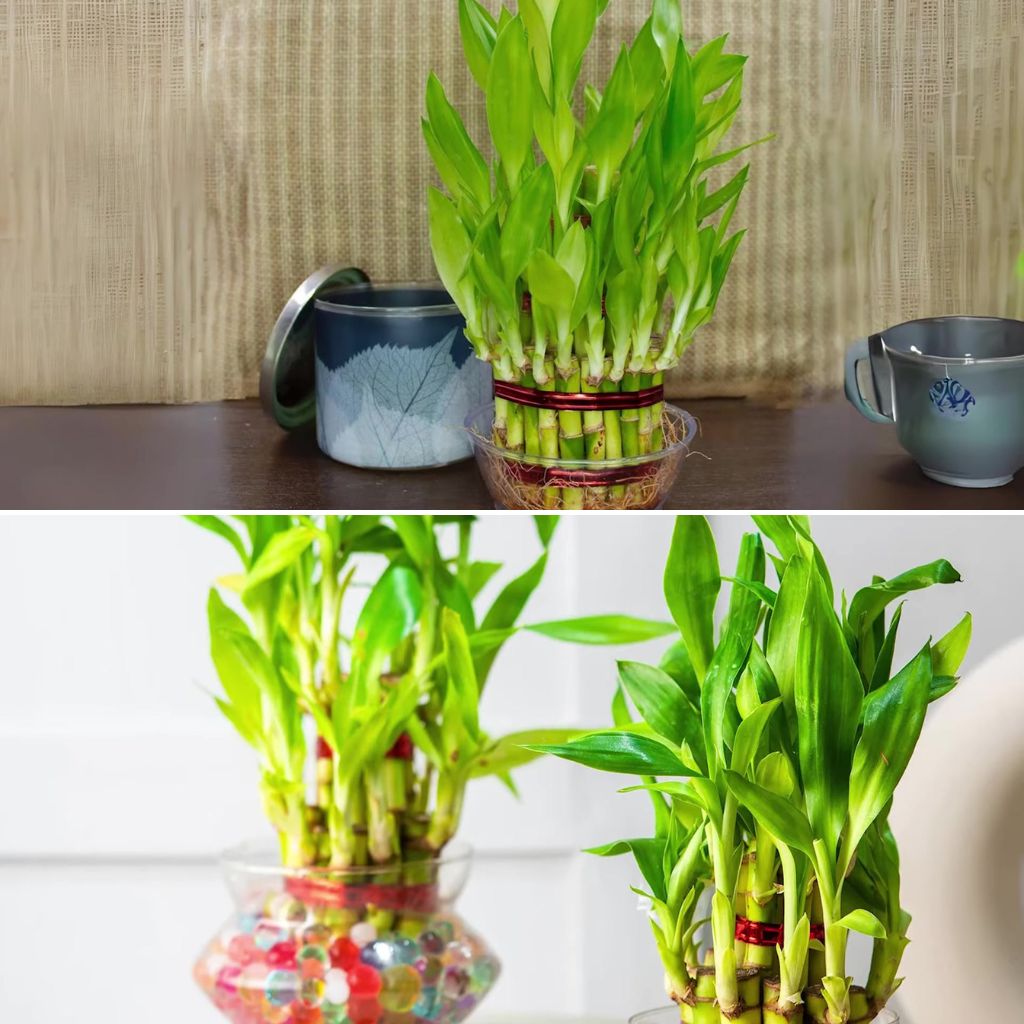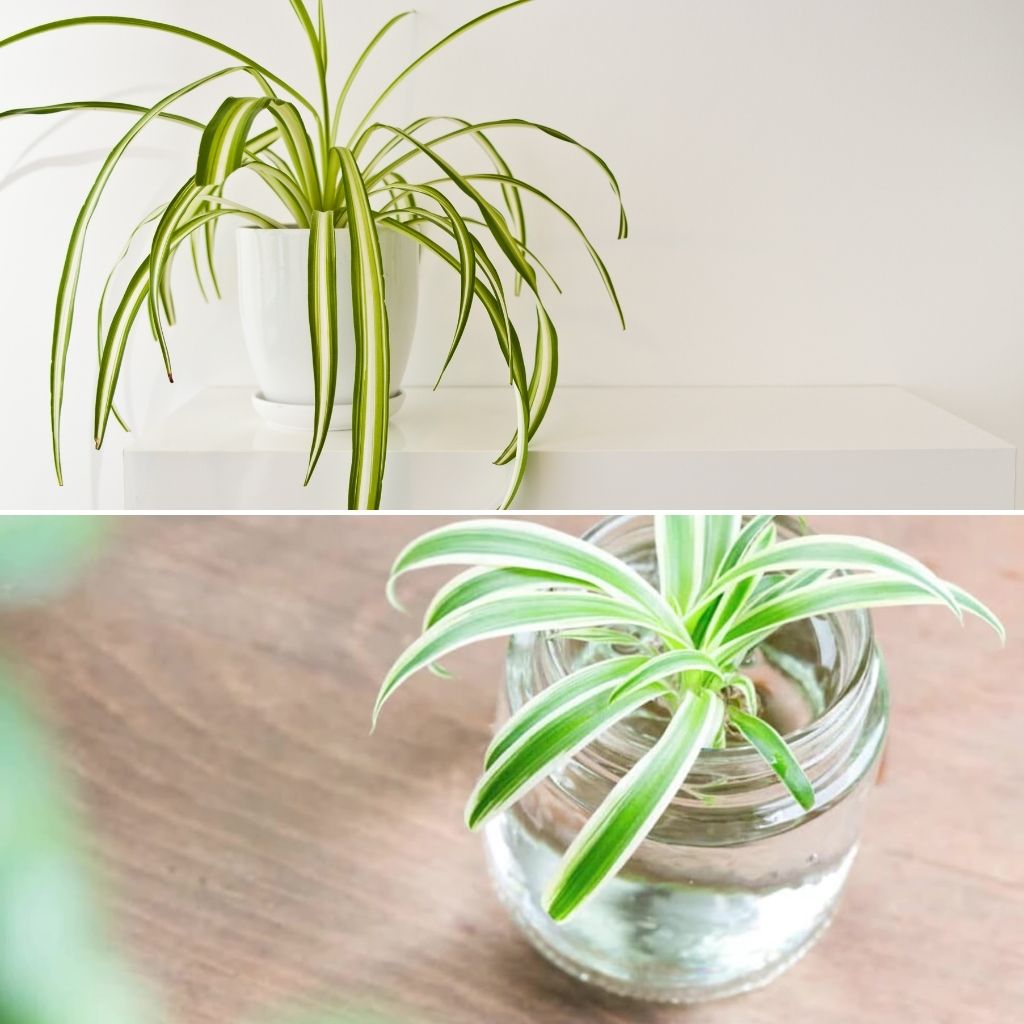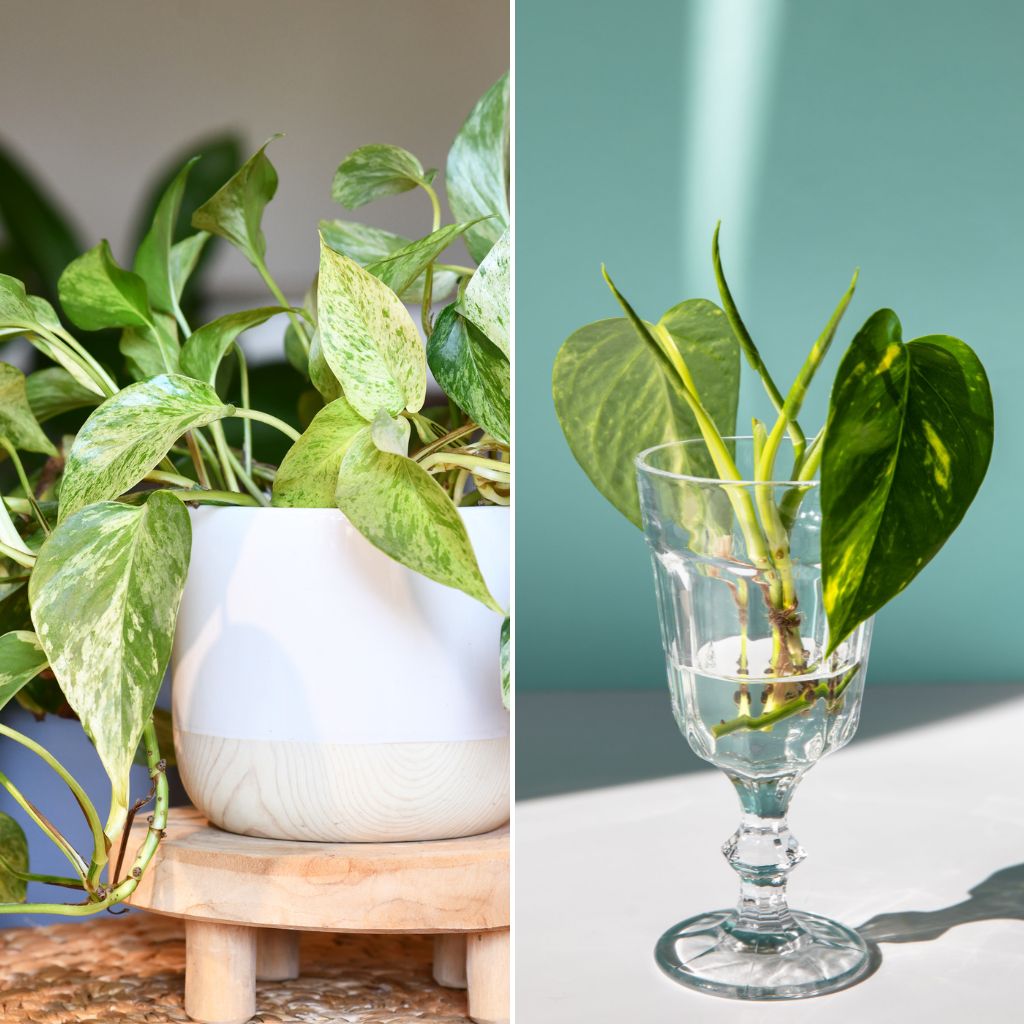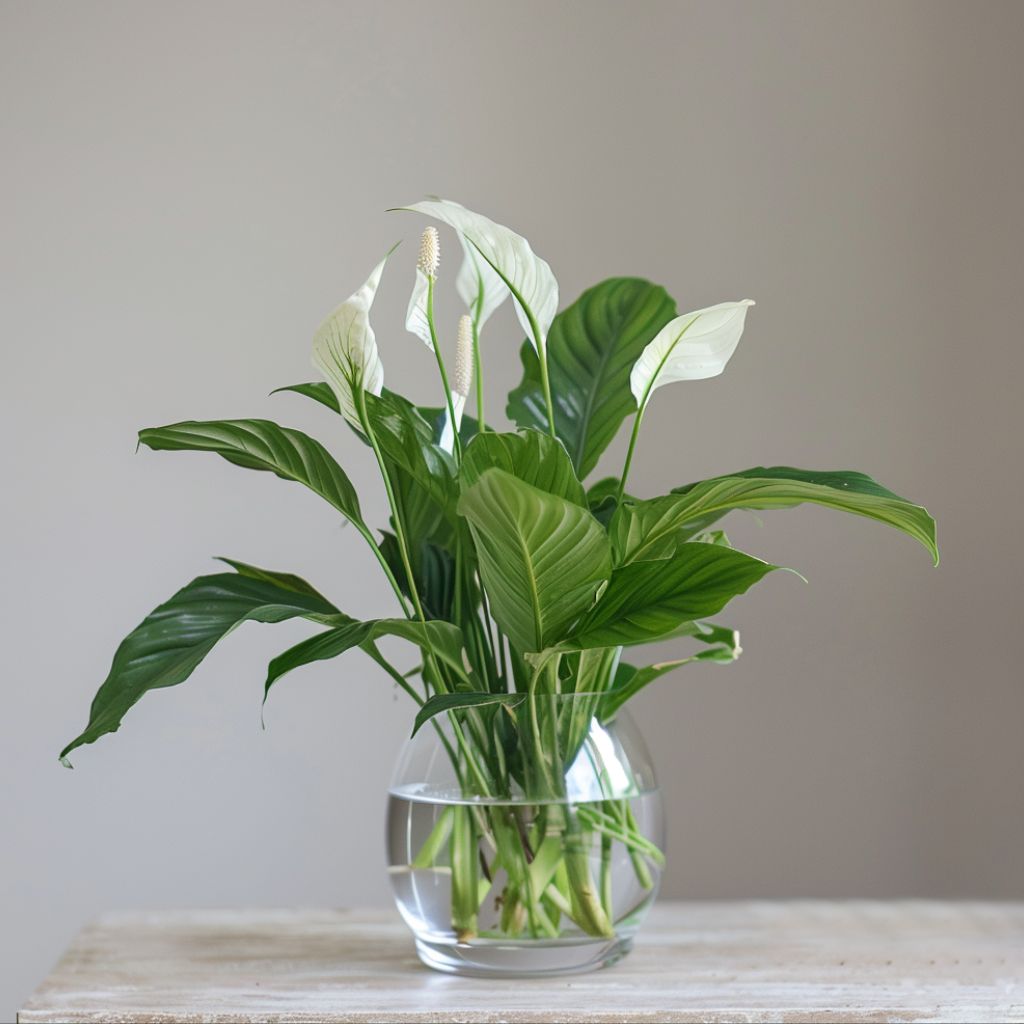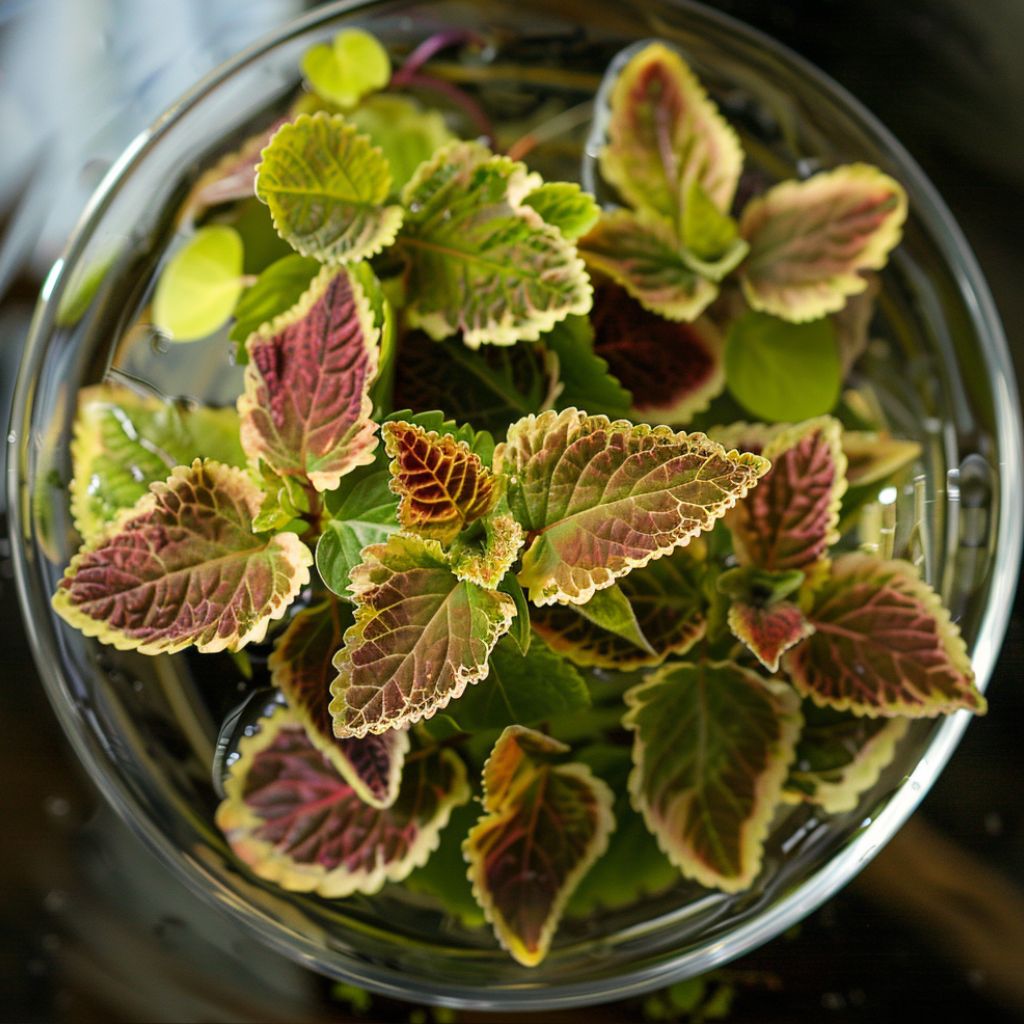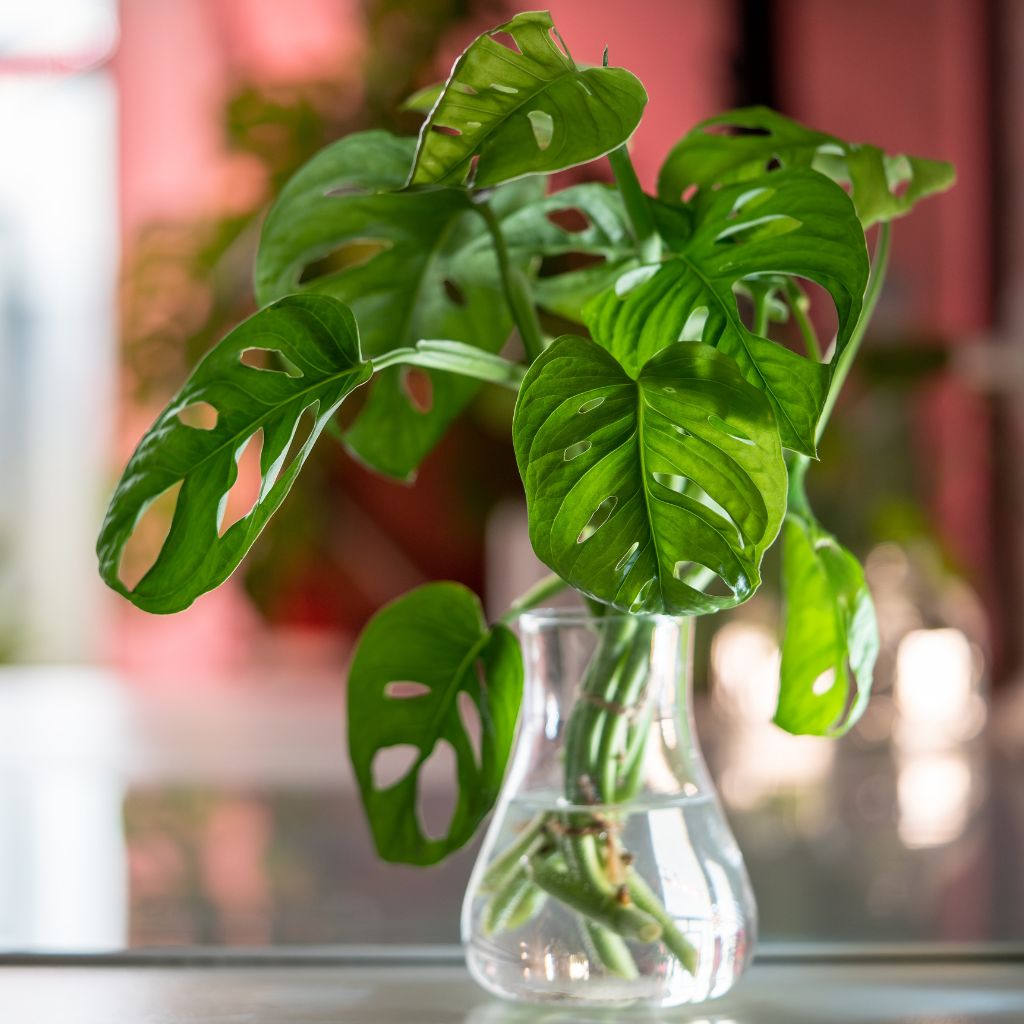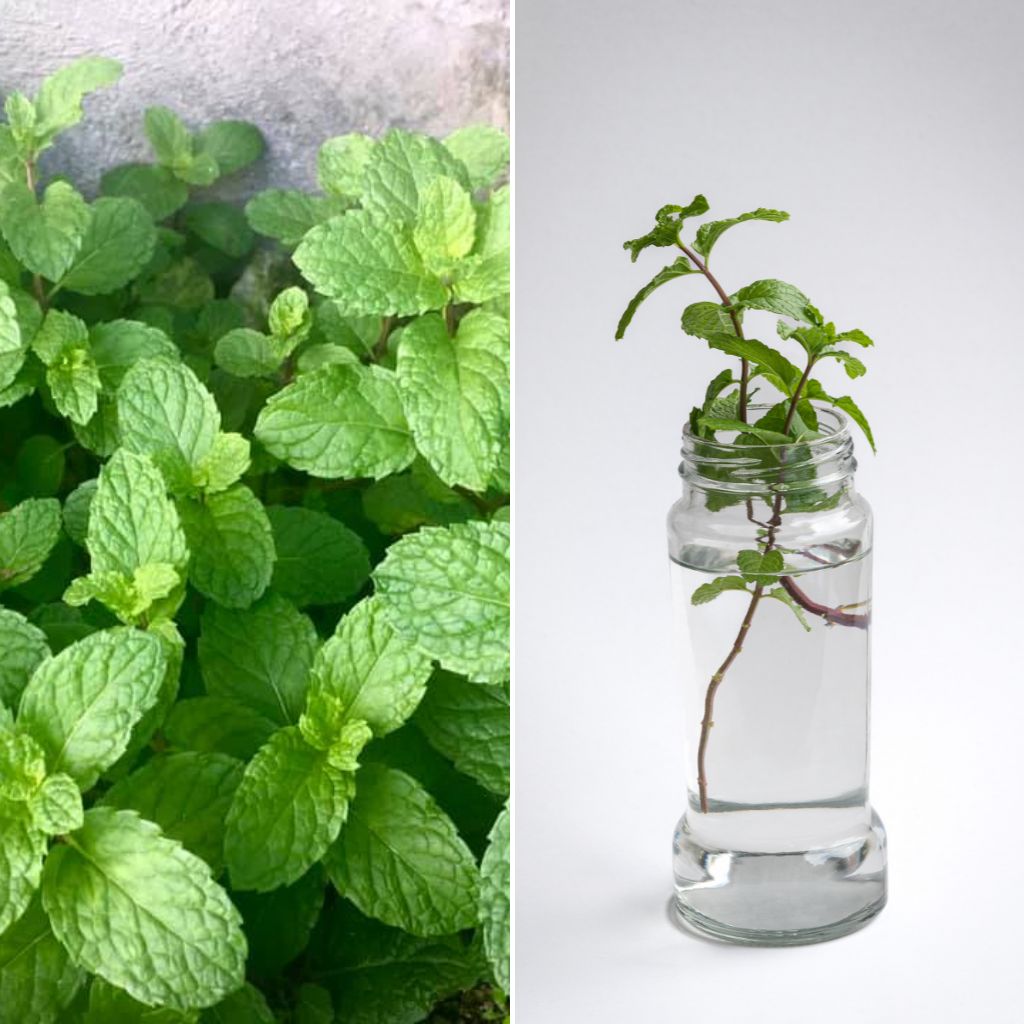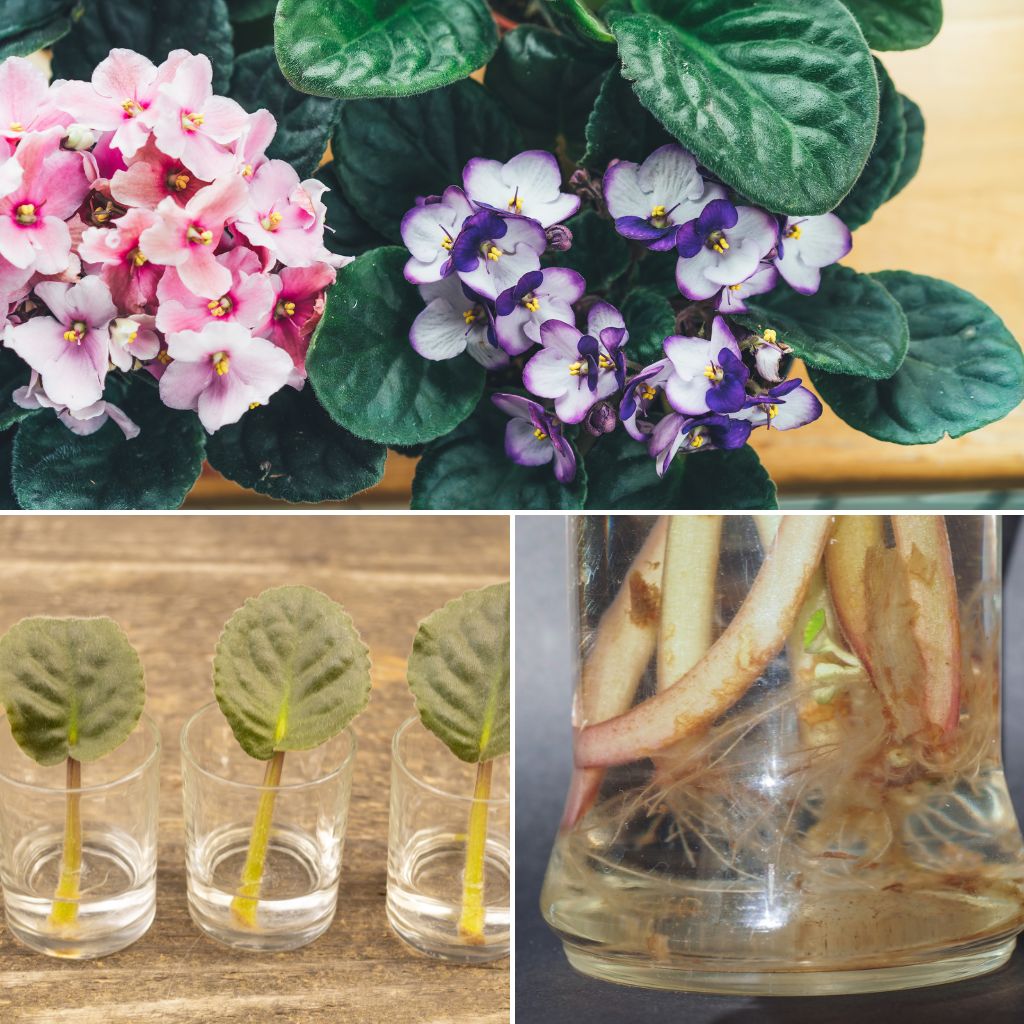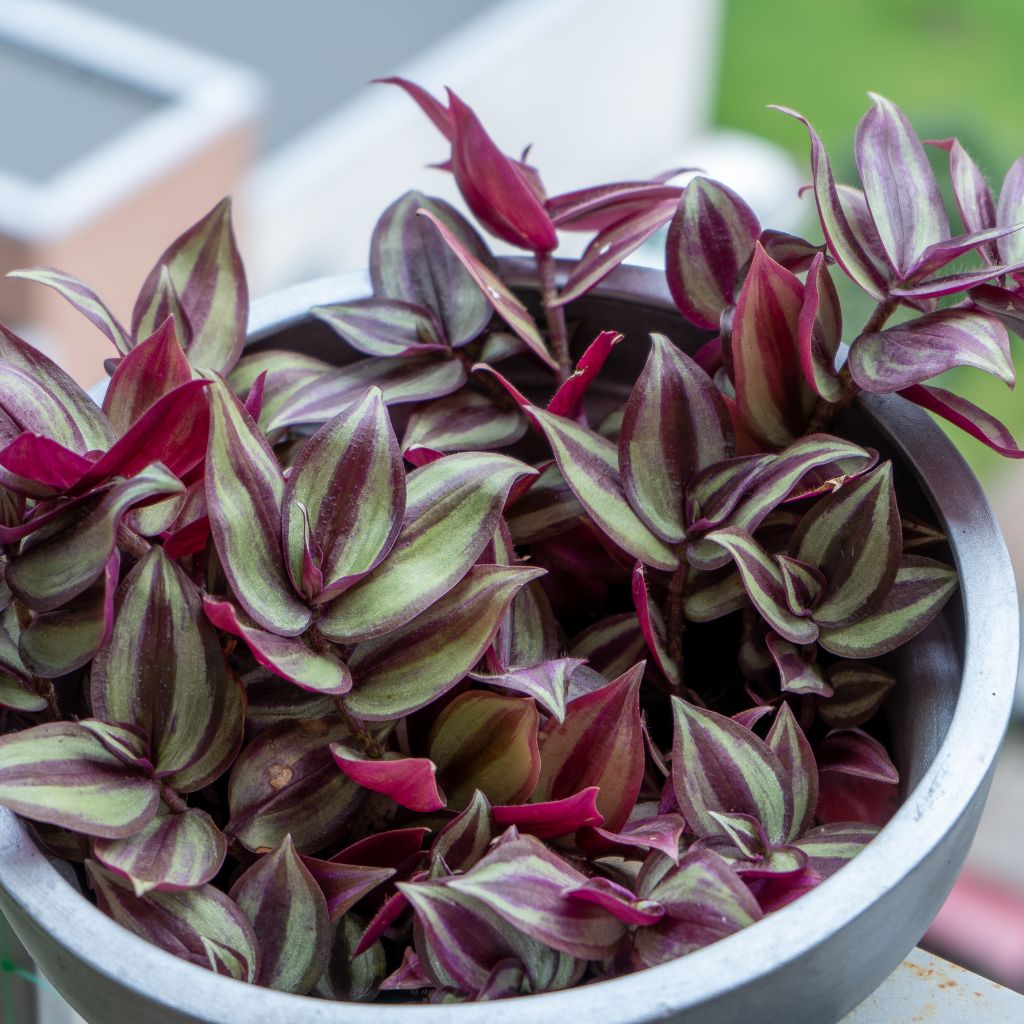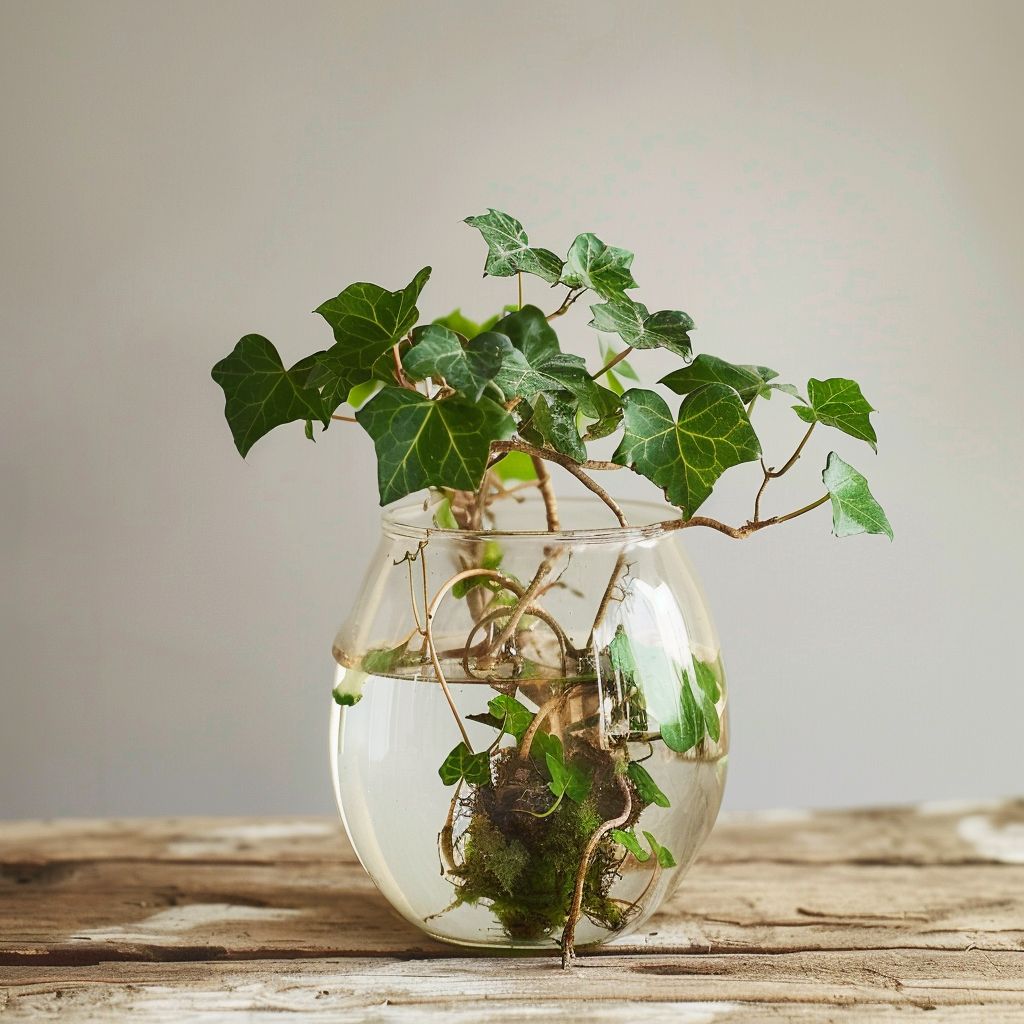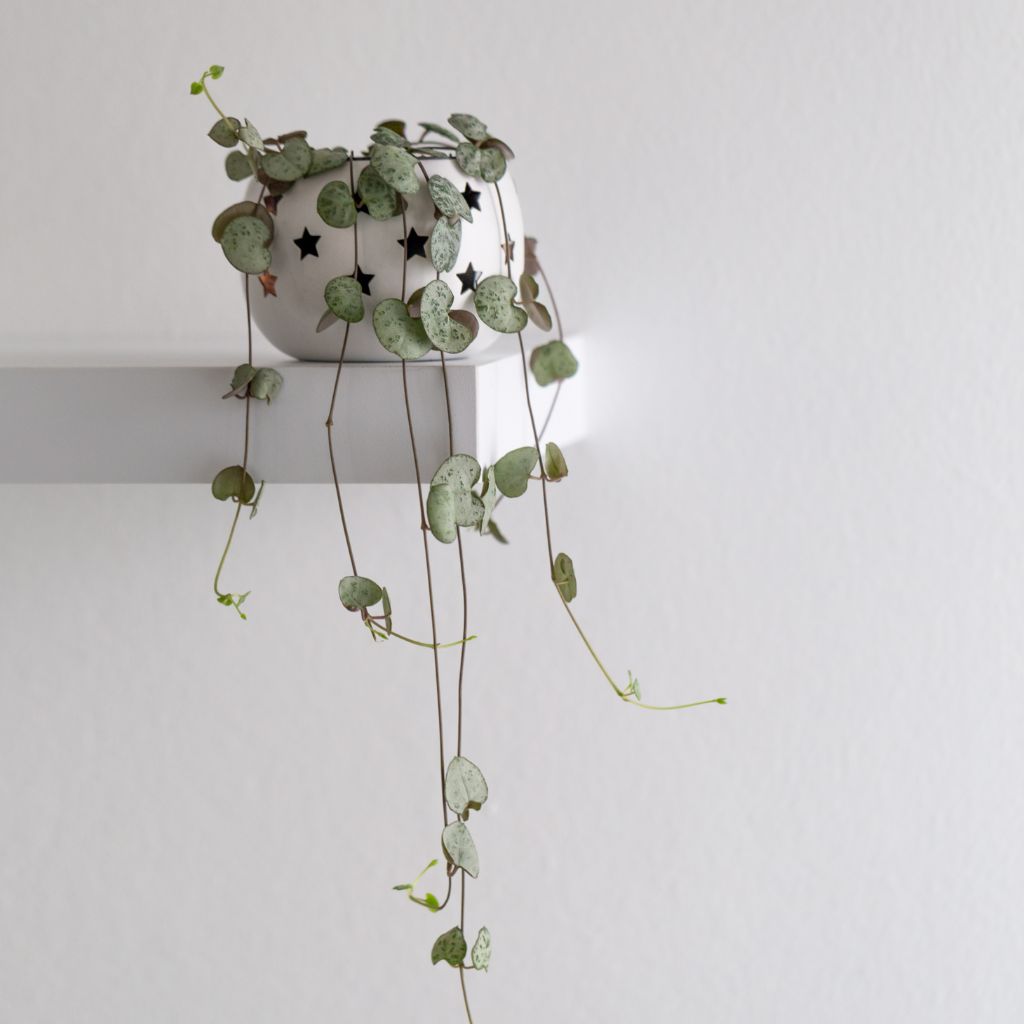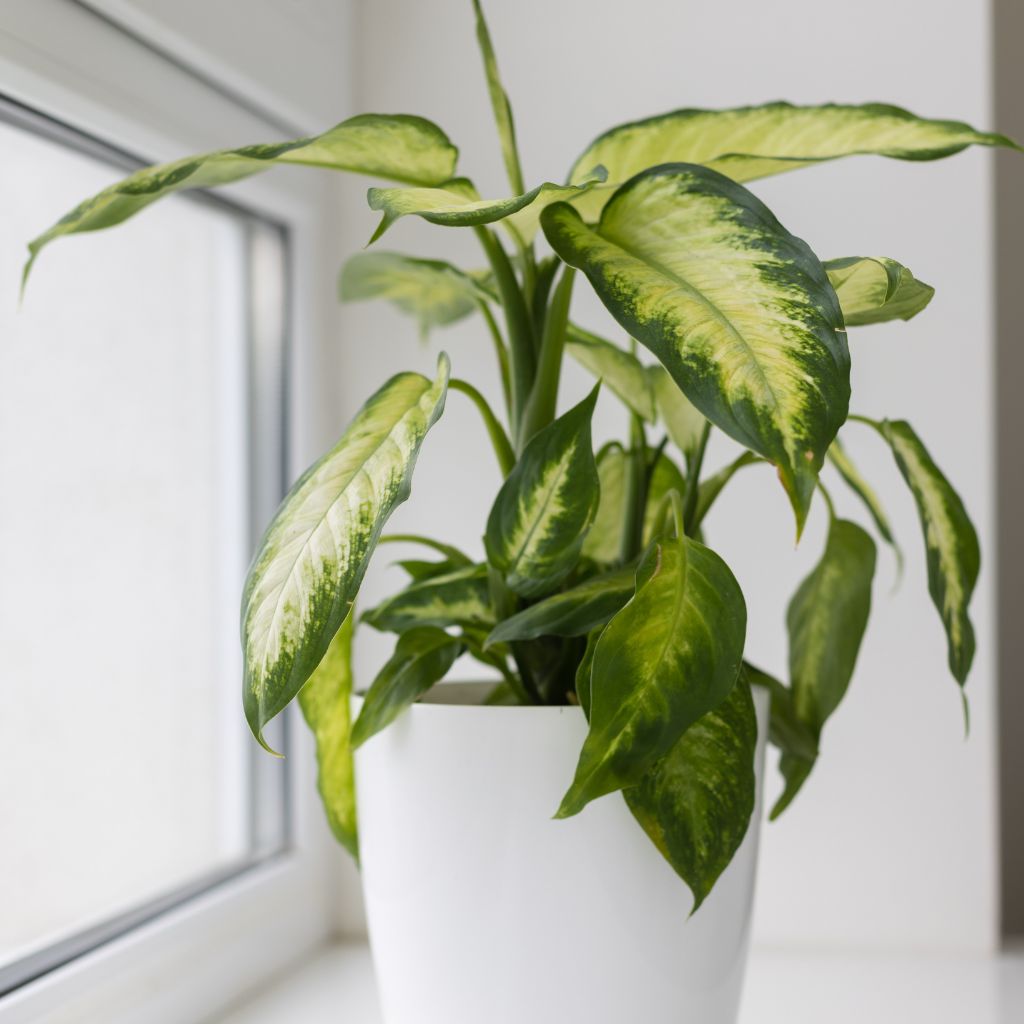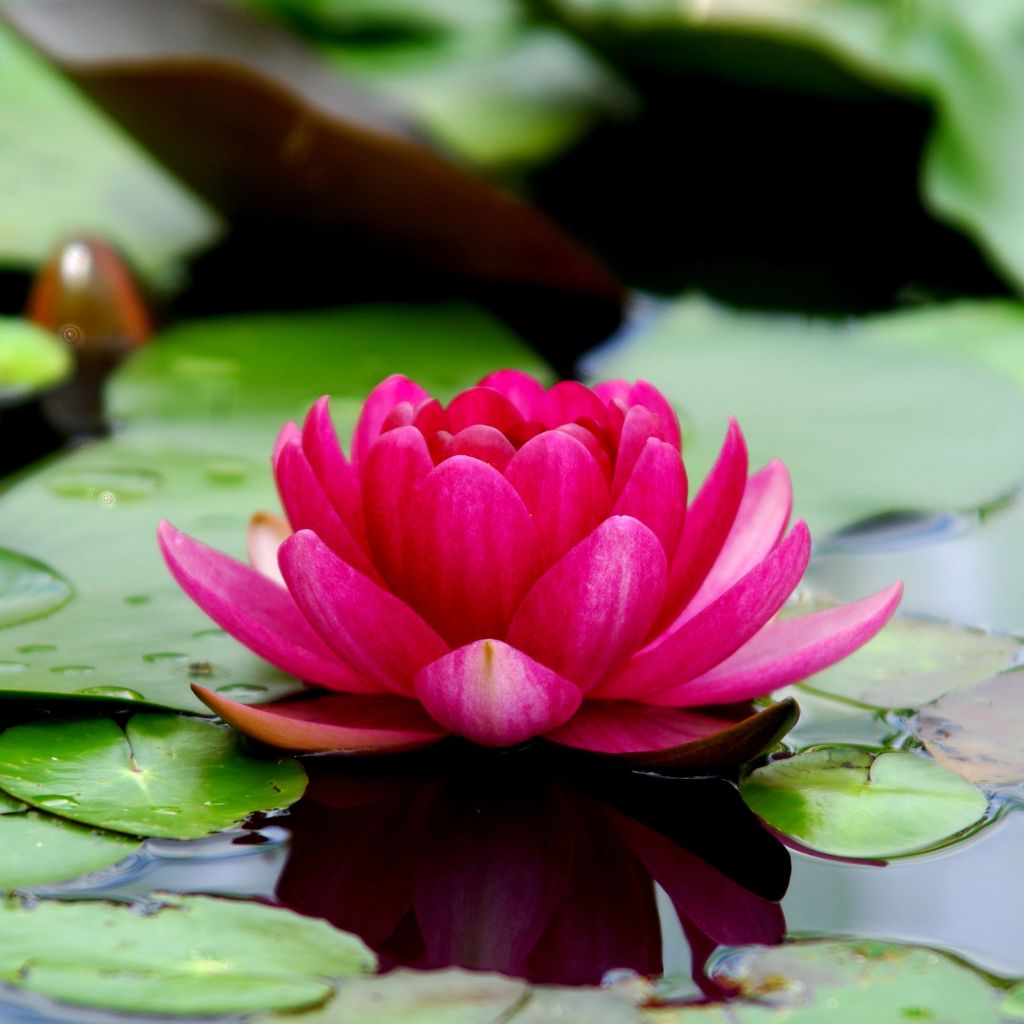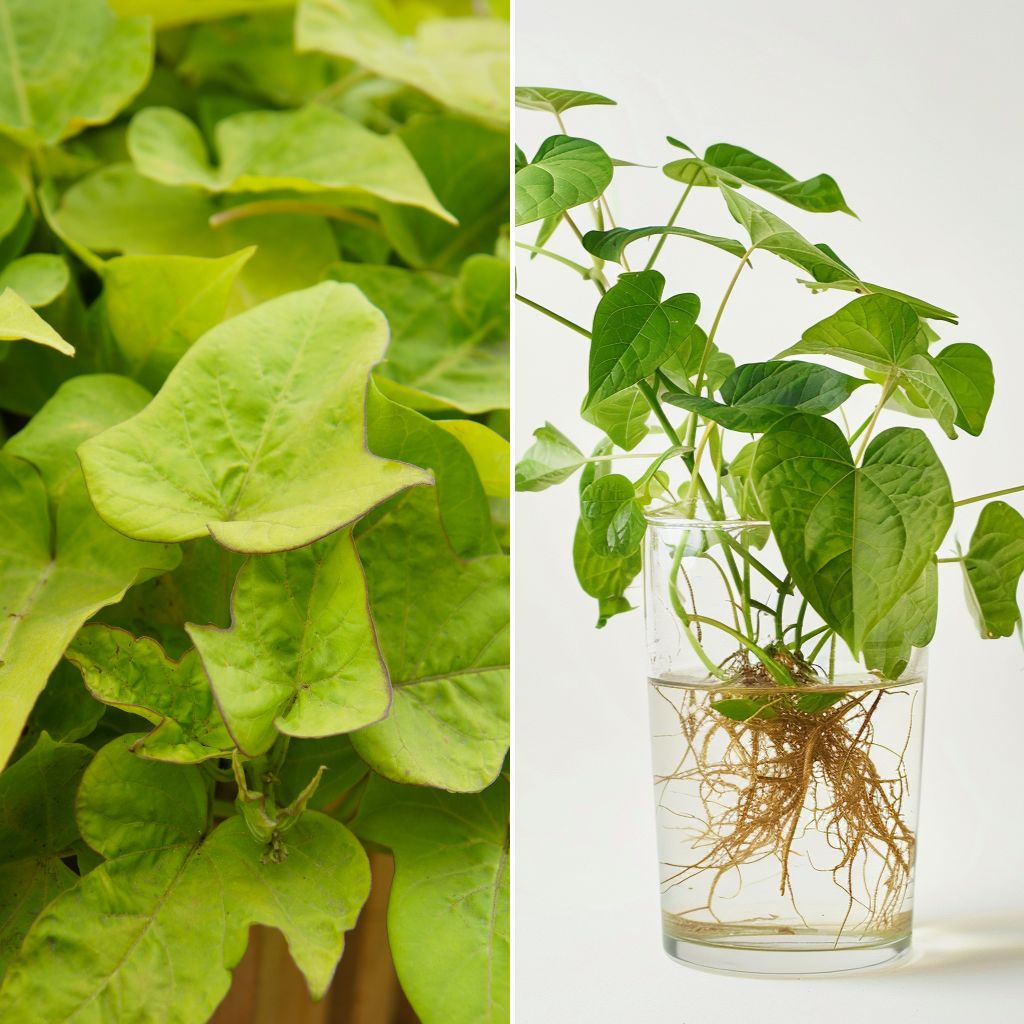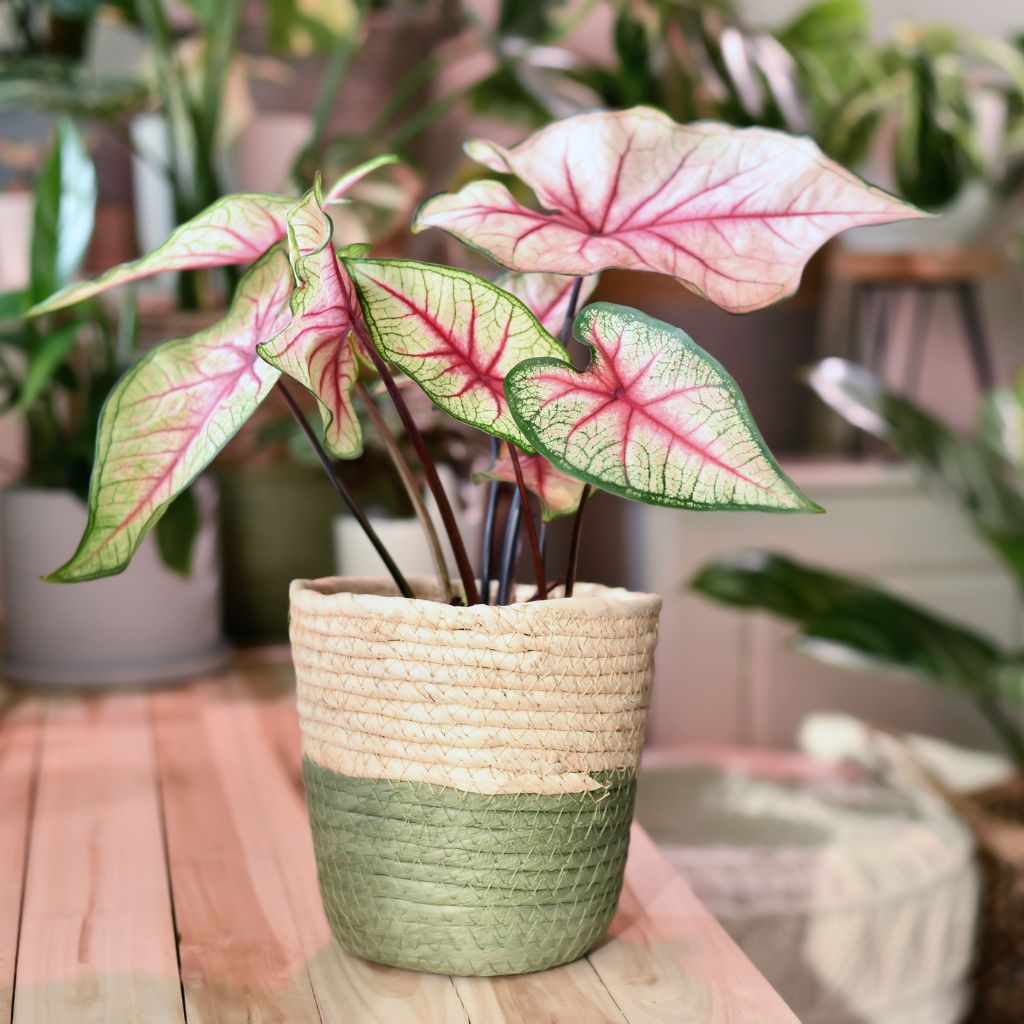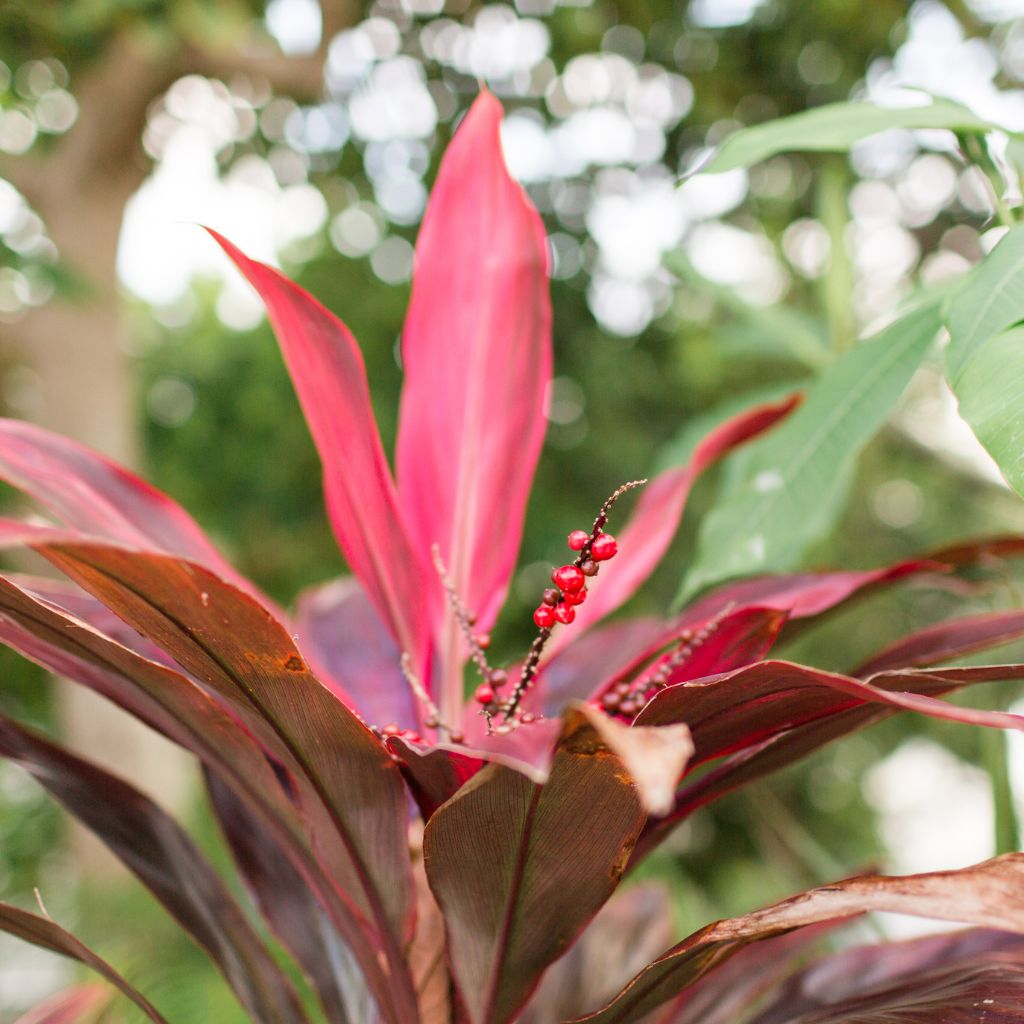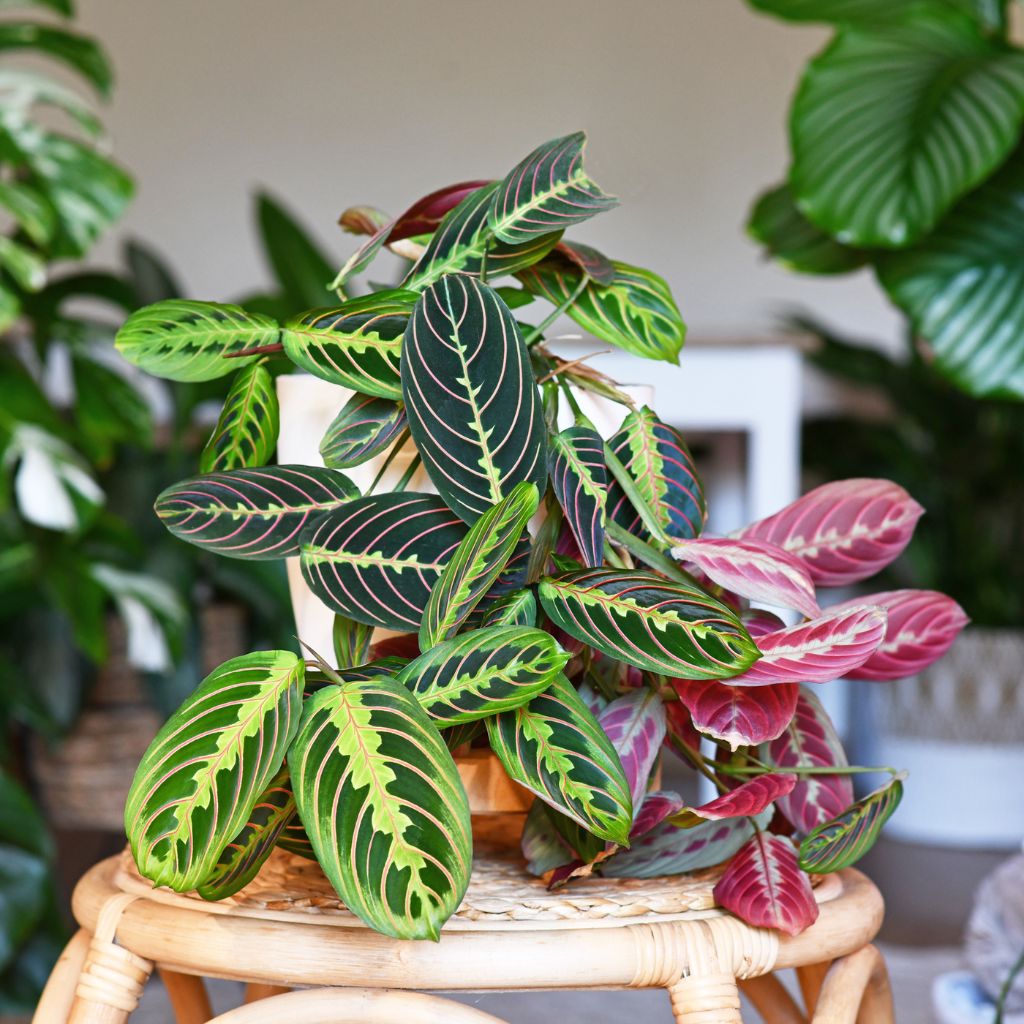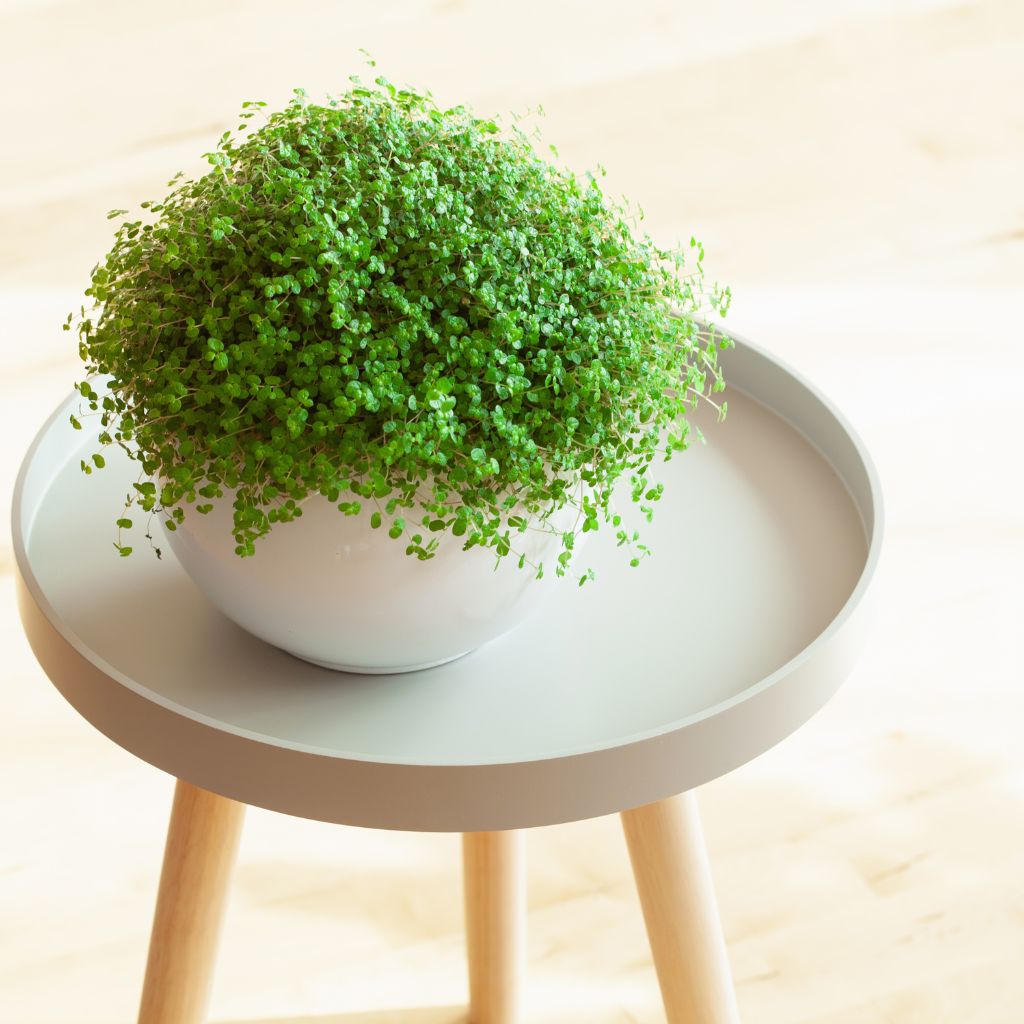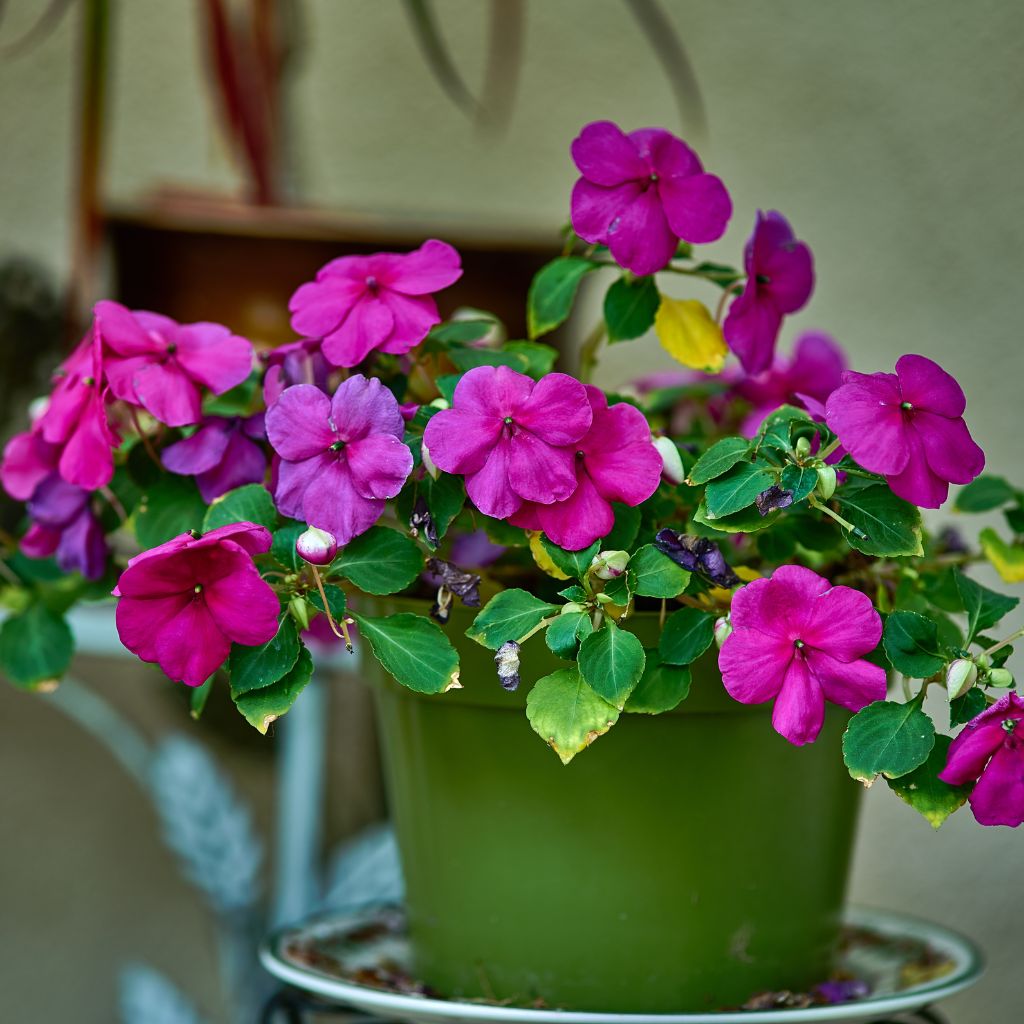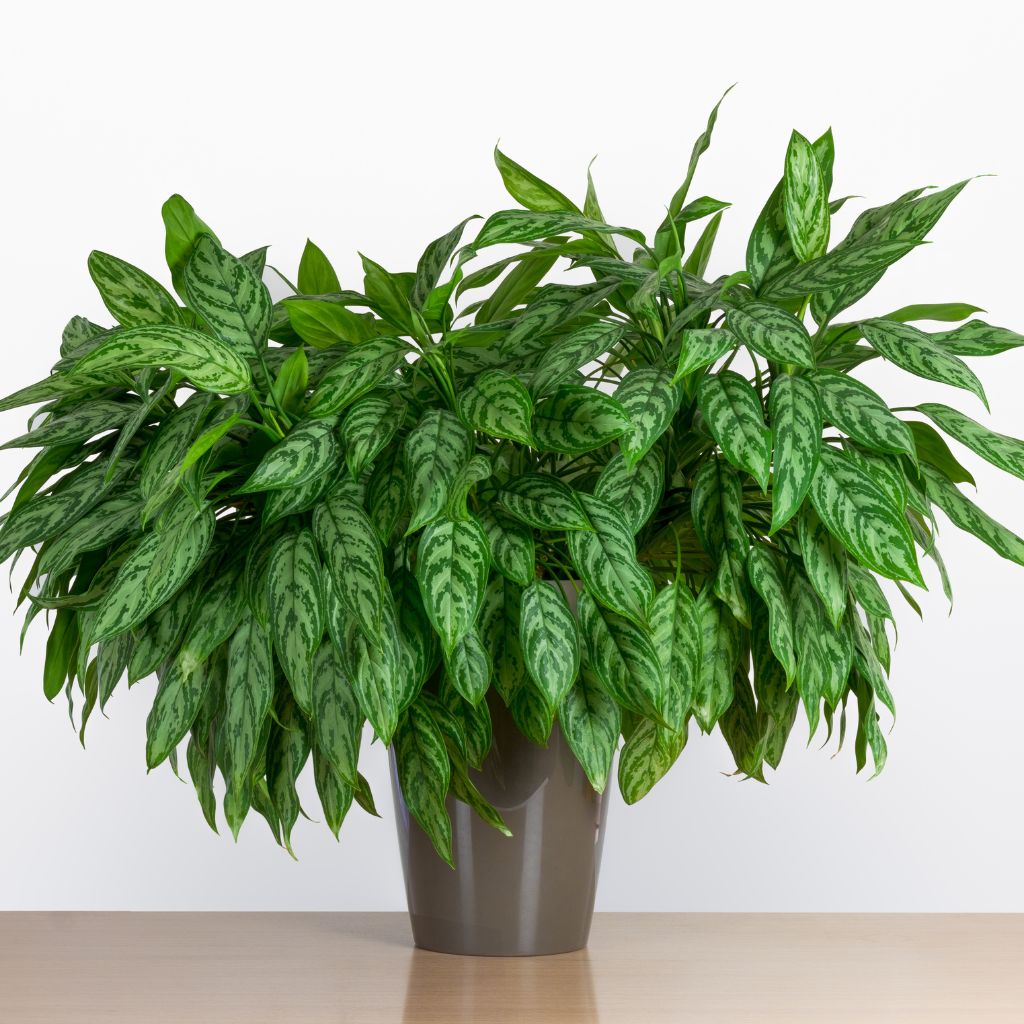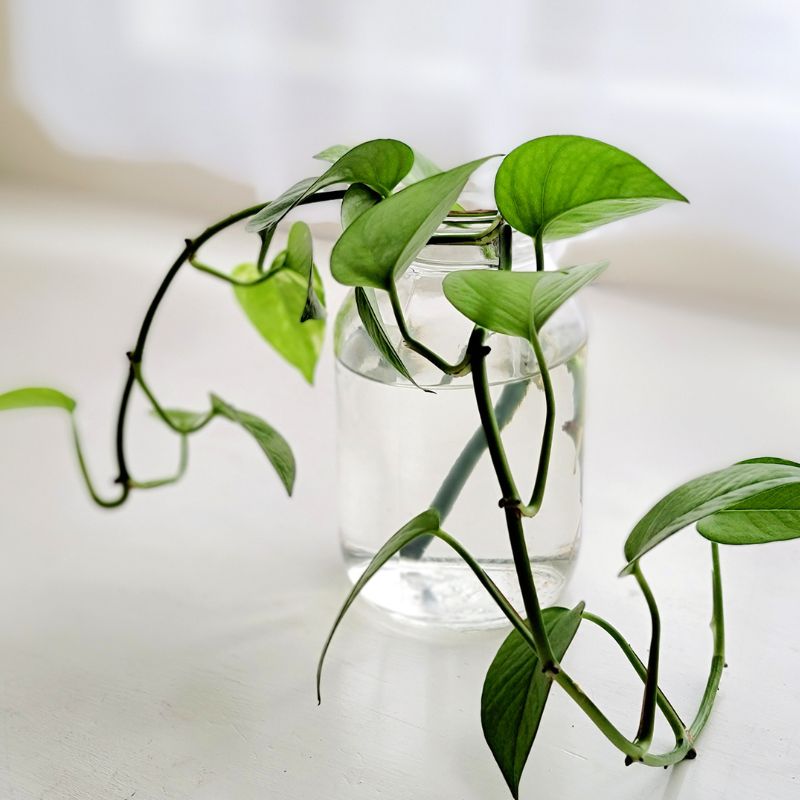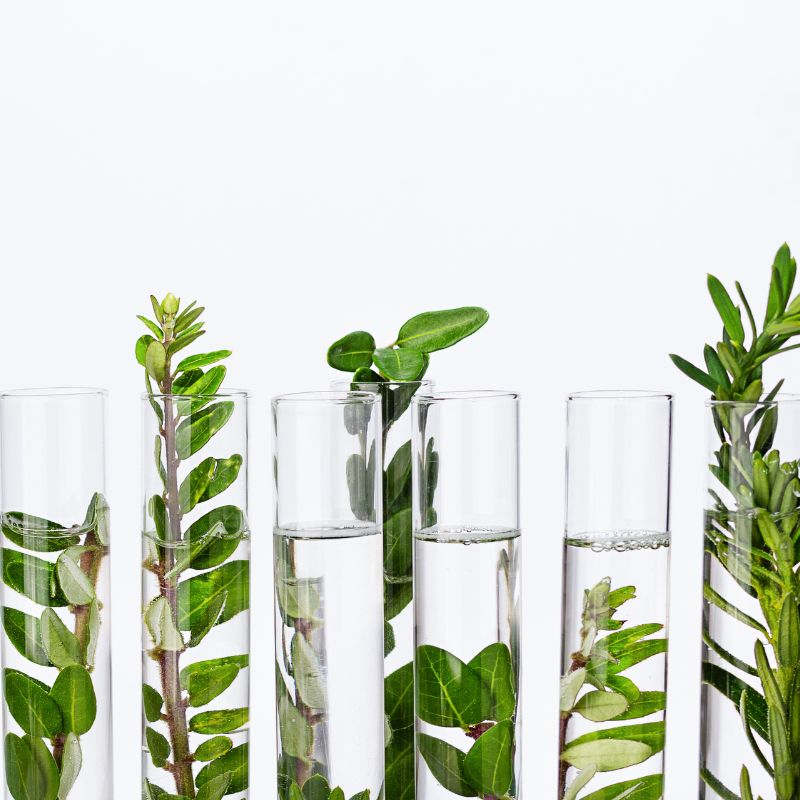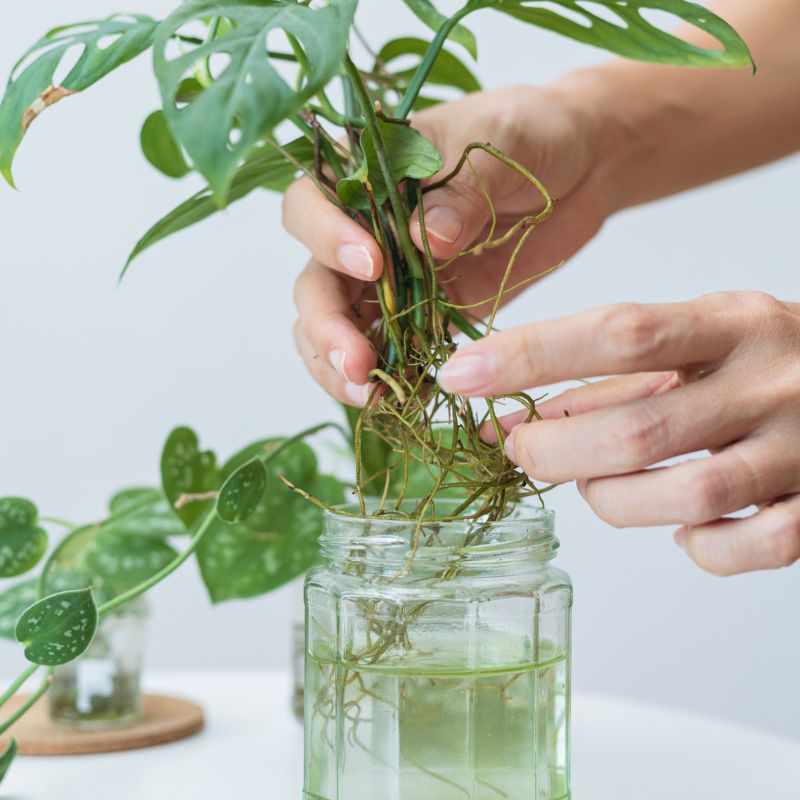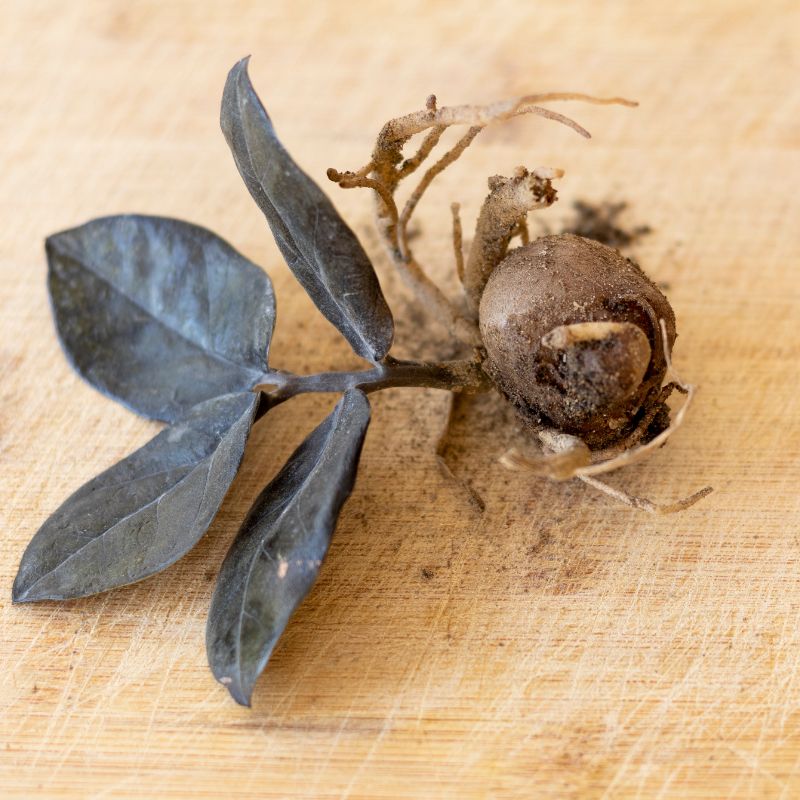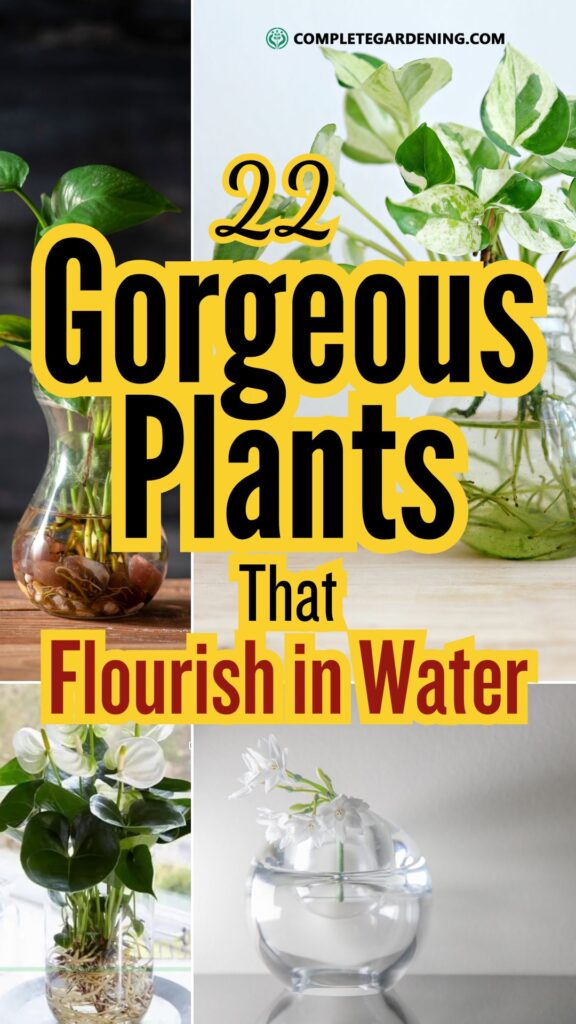If you love houseplants but hate dealing with soil, there’s great news: many plants can thrive beautifully in water.
Hydroponic gardening, which involves growing plants in water without soil, is a fantastic alternative for those seeking a cleaner and more straightforward approach to indoor gardening.
In this article, we’ll explore several gorgeous plants that flourish in water, making it easy to bring greenery into your home.
1. Lucky Bamboo (Dracaena sanderiana)
Despite its name, lucky bamboo is not actually bamboo. This resilient plant belongs to the Dracaena family and is known for its ability to grow in water. Often sold in various shapes, from simple stalks to intricate braided designs, lucky bamboo is incredibly easy to care for.
Growing Tips:
Use a clear container to enjoy the sight of its roots.
Fill the container with filtered or bottled water to avoid chlorine.
Anchor the plant with pebbles if using a shallow dish.
Change the water when it looks dirty.
Place the plant in low to medium light conditions.
2. Spider Plant (Chlorophytum comosum)
Spider plants are popular for their air-purifying qualities and ease of propagation. It has long, slender leaves that can grow up to 12 inches in length.
This plant is known for its ability to remove toxins from the air, making it a great choice for indoor water gardens. It can thrive in a variety of light conditions, from bright to low light.
The mother plant produces numerous offshoots, or “pups”, that can be easily snipped and grown in water.
Growing Tips:
Place the cuttings in water and keep them in bright, indirect light.
Roots will form in 2 to 4 weeks.
Use a water-soluble fertilizer sparingly to avoid root burn.
Transfer to soil if the plant outgrows its water container.
3. Golden Pothos (Epipremnum aureum)
Golden pothos is a versatile and low-maintenance plant that thrives in water. Its trailing vines and heart-shaped leaves make it a favorite for indoor gardens.
Growing Tips:
Cut a few inches of healthy stem from an existing plant.
Place the cuttings in water, ensuring no leaves are submerged.
Use filtered water if your tap water is high in chlorine.
Occasionally feed with a diluted water-soluble fertilizer.
Keep in bright to medium indirect light.
4. Heartleaf Philodendron (Philodendron hederaceum)
This hardy plant is perfect for hydroponic growth. Its heart-shaped leaves add a touch of elegance to any room.
Growing Tips:
Take a 3-to-5-inch cutting from a healthy plant and place it in fresh water.
Change the water occasionally to keep it fresh.
This plant doesn’t require much fertilizer, so only feed if it shows signs of poor health.
Transition to soil for long-term growth if desired.
5. Peace Lily (Spathiphyllum spp.)
Peace lilies are known for their beautiful white blooms and air-purifying abilities.
This plant is easy to care for and can thrive in both low and bright light conditions.
Growing Tips:
Remove all soil from the roots before placing the plant in water.
Use a tall vase to suspend the plant above the water line, allowing only the roots to be submerged.
Change the water regularly to keep it clean.
Place the peace lily in medium indirect light.
Add a few drops of hydroponic fertilizer occasionally.
6. Coleus (Plectranthus scutellarioides)
Coleus plants are known for their vibrant, colorful leaves. They are easy to propagate and grow in water.
Growing Tips:
Place a cutting in a small jar of water, making sure there are no flowers on the stem.
Gradually increase the size of the container as the plant grows.
Provide bright, indirect light to maintain vibrant leaf colors.
Fertilize with diluted water-soluble fertilizer if necessary.
7. Swiss Cheese Vine (Monstera adansonii)
The Swiss cheese vine is loved for its unique, perforated leaves. This plant can grow well in water, adding a tropical touch to your home.
Growing Tips:
Cut a 3- to 4-inch section from a healthy plant, ensuring it has a couple of leaves.
Place the cutting in fresh water and change the water every few days.
Provide bright, indirect light to avoid burning the leaves.
Fertilize occasionally with diluted water-soluble fertilizer.
8. Mint (Mentha spp.)
Mint is a vigorous grower in water. Place stem cuttings in water, changing it weekly. Keep in bright, indirect light and occasionally add hydroponic fertilizer.
Growing Tips:
Select healthy mint stems about 6 inches long with several leaves. Remove the lower leaves to expose the nodes.
Fill a glass container with filtered or distilled water to avoid chlorine and other chemicals that can harm the plant.
Change the water every 3-5 days to prevent stagnation and keep the mint healthy.
Place the container in a spot with bright, indirect light. Too much direct sunlight can cause the leaves to burn.
Give each stem enough space in the container to ensure proper growth and avoid competition for nutrients.
Wash the container thoroughly every couple of weeks to remove any algae or bacterial buildup.
9. African Violet (Saintpaulia spp.)
African violets are known for their delicate flowers and can be grown in water with some care.
Growing Tips:
Keep the leaf blade above water while allowing the petiole to extend into the water.
Use long-neck bottles for this purpose.
Change the water regularly and keep the plant in bright, indirect light.
Avoid adding fertilizer; transfer to soil for long-term growth.
10. Inch Plant (Tradescantia zebrina)
Inch plants are fast-growing and adapt well to water environments.
Growing Tips:
Remove several inches of stem from a mother plant and place it in water.
Keep the container in a bright, but not sunny, location.
Change the water frequently to promote root growth.
Transfer to soil if desired, after roots are established.
11. English Ivy (Hedera helix)
English ivy is a climbing vine that can easily adapt to water-based cultivation.
Growing Tips:
Place cuttings in a jar of water on a well-lit windowsill.
Trim off any bottom leaves to prevent rotting.
Change the water every few weeks to keep it fresh.
12. String of Hearts (Ceropegia woodii)
String of hearts is a popular ground cover that can also thrive in water.
Growing Tips:
Keep the roots submerged in water and place the plant in filtered sunlight.
Change the water every two weeks and use a diluted liquid fertilizer regularly.
13. Dumb Cane (Dieffenbachia)
Dumb cane stands out for its striking leaves and adaptability to water.
Growing Tips:
Take a healthy stem cutting and submerge the nodes in water.
Place in bright, indirect light and change the water weekly.
Handle with care, as the sap can irritate the skin.
14. Lotus Flowers (Nelumbo spp.)
Lotus flowers are known for their beauty and cultural significance.
Growing Tips:
Grow in full sun and calm, shallow water.
Use large pots submerged in ponds with a layer of heavy clay soil covered with gravel.
Fertilize regularly during the growing season.
15. Sweet Potato Vine (Ipomoea batatas)
Sweet potato vines are vigorous growers with heart-shaped leaves that thrive in water.
Growing Tips:
Place stem cuttings or half-suspend the tuber in water.
Keep the water level constant.
Provide bright, indirect light.
16. Paperwhite Narcissus (Narcissus papyraceus)
Paperwhites are popular indoor plants for winter, known for their fragrant white blooms.
Growing Tips:
Place bulbs in a water dish with stones to anchor them.
Position bulbs with pointed ends up.
Place in a cooler spot with dappled light.
17. Caladium (Caladium spp.)
Caladiums have colorful, shield-like leaves that can thrive in water.
Growing Tips:
Clean off all soil from the roots before placing in water.
Place in an area with partial to full shade.
Change water weekly and feed with water-soluble plant food.
18. Ti Plant (Cordyline fruticosa)
Ti plants, also known as good luck plants, can easily grow in water.
Growing Tips:
Place a cutting in a glass jar with pebbles and water.
Keep near bright, filtered sunlight.
Fertilize every three weeks.
19. Prayer Plant (Maranta leuconeura)
Prayer plants have striking leaves that fold together at night, making them unique additions to water gardens.
Growing Tips:
Place a healthy stem cutting in water.
Use room-temperature water.
Provide bright, indirect light.
Change water weekly.
20. Baby’s Tears (Soleirolia soleirolii)
Baby’s tears produce a dense, delicate trailing mat of tiny leaves and can adapt to growing in water.
Growing Tips:
Pinch off a cluster of stems and place in water.
Change the water weekly.
Allow the water level to drop once roots are well-formed.
21. Impatiens (Impatiens spp.)
Impatiens can grow as marginal pond plants, making them ideal for water cultivation.
Growing Tips:
Snip off a few stems and place in water.
Overwinter them indoors.
Provide bright, indirect light.
22. Chinese Evergreen (Aglaonema commutatum)
Chinese evergreens have lush, decorative leaves and adapt well to water-based environments.
Growing Tips:
Place a healthy stem cutting in water.
Remove bottom leaves that are submerged.
Change water every few days.
Place in indirect sunlight.
Why Grow Plants in Water?
Growing plants in water offers numerous benefits. It’s a cleaner alternative to soil-based gardening, reducing the mess and maintenance typically associated with potted plants.
Additionally, it allows for closer observation of root development, providing a unique insight into the plant’s growth process.
Water-grown plants can also be a beautiful and minimalist addition to home decor, fitting seamlessly into glass containers that showcase their natural beauty.
Tips for Successful Water Gardening
Use the Right Water: Tap water often contains chemicals that can harm plants. Opt for filtered or distilled water, or let tap water sit out for 24 hours to allow chlorine to evaporate.
Change the Water Regularly: Stagnant water can lead to root rot and other issues. Refresh the water every one to two weeks.
Provide Adequate Light: Each plant has specific light requirements. Ensure they receive the right amount of light to thrive.
Use Fertilizer Sparingly: Water alone doesn’t provide all the nutrients plants need. Use a diluted hydroponic fertilizer to supplement their growth.
Monitor for Pests: Even in water, plants can attract pests. Keep an eye out for any signs of infestation and treat promptly.
Common Issues with Water-Grown Plants – Yellowing Leaves
Yellowing leaves can result from nutrient imbalances, poor water quality, or inadequate light. To prevent this:
Change the water regularly.
Use filtered or distilled water.
Provide adequate light.
Add hydroponic fertilizer as needed.
Algae Growth
Algae growth is common in water containers exposed to excessive sunlight and nutrients. Prevent algae by:
Keeping water clean.
Moderating light exposure.
Using a small amount of hydrogen peroxide.
Root Rot
Root rot occurs when plants sit in water too long without sufficient oxygen. Prevent root rot by:
Ensuring containers allow for adequate aeration.
Changing the water regularly.
Trimming damaged roots and transferring the plant to fresh water.
Cloudy Water
Cloudy water can be caused by debris accumulation and bacterial growth. Prevent cloudy water by:
Using clean, distilled water.
Changing the water regularly.
Keeping containers and cuttings free from dirt.
Exploring the world of hydroponic houseplants opens a realm of beauty and versatility within your home.
Growing plants in water adds a stunning visual appeal, showcasing the delicate balance of nature in a simple glass container. The benefits extend beyond aesthetics, offering a low-maintenance
